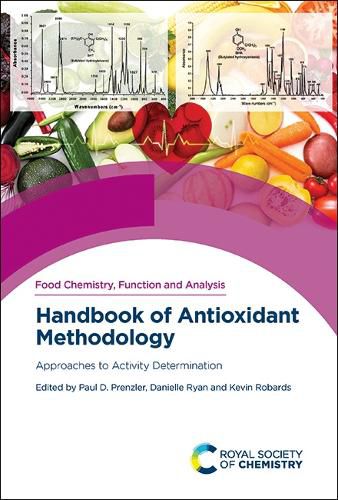Readings Newsletter
Become a Readings Member to make your shopping experience even easier.
Sign in or sign up for free!
You’re not far away from qualifying for FREE standard shipping within Australia
You’ve qualified for FREE standard shipping within Australia
The cart is loading…






The field of antioxidant research has grown rapidly over the last 30 years and shows no sign of slowing down. In order to understand how antioxidants work, it is essential to understand how their activity is measured. However, antioxidant activity measurements are controversial and their value has been challenged. This book addresses a number of the controversies on antioxidant testing methods. Specifically, the book highlights the importance of context, helping the reader to decide what methods are most appropriate for different situations, how the results can be interpreted and what information may be inferred from the data.
There are a multiplicity of methods for measuring activity, with no standardized method approved for in vitro or in vivo testing. In order to select an appropriate method, a thorough knowledge of the processes associated with reduction-oxidation is essential, leading to an improved understanding and use of activity measurements and the associated data. The book presents background information, in a unique style, which is designed to assist readers to grasp the fundamentals of redox processes, as well as thermodynamics and kinetics, which are essential to later chapters. Recovery and extraction of antioxidants from diverse matrices are presented in a clear and logical fashion along with methods used to determine antioxidant activity from a mechanistic perspective. Other chapters present current methodologies used for activity testing in different sample types ranging from foods and plants, to body fluids and even to packaging, but always with a strong emphasis on the nature of the sample and the underlying chemistry of the method.
A number of emerging techniques for assessing antioxidant behaviour, namely, electrochemical methods, chip technology exploiting microfluidic devices, metabolomics plus studies of gene and protein expression, are examined. Ultimately, these techniques will be involved in generation of big data for which an understanding of chemometrics will be essential in drawing valid conclusions.
The book is written to appeal to a wide audience, but will be particularly helpful for any researchers who are attempting to make sense of the vast literature and often conflicting messages on antioxidant activity.
$9.00 standard shipping within Australia
FREE standard shipping within Australia for orders over $100.00
Express & International shipping calculated at checkout
The field of antioxidant research has grown rapidly over the last 30 years and shows no sign of slowing down. In order to understand how antioxidants work, it is essential to understand how their activity is measured. However, antioxidant activity measurements are controversial and their value has been challenged. This book addresses a number of the controversies on antioxidant testing methods. Specifically, the book highlights the importance of context, helping the reader to decide what methods are most appropriate for different situations, how the results can be interpreted and what information may be inferred from the data.
There are a multiplicity of methods for measuring activity, with no standardized method approved for in vitro or in vivo testing. In order to select an appropriate method, a thorough knowledge of the processes associated with reduction-oxidation is essential, leading to an improved understanding and use of activity measurements and the associated data. The book presents background information, in a unique style, which is designed to assist readers to grasp the fundamentals of redox processes, as well as thermodynamics and kinetics, which are essential to later chapters. Recovery and extraction of antioxidants from diverse matrices are presented in a clear and logical fashion along with methods used to determine antioxidant activity from a mechanistic perspective. Other chapters present current methodologies used for activity testing in different sample types ranging from foods and plants, to body fluids and even to packaging, but always with a strong emphasis on the nature of the sample and the underlying chemistry of the method.
A number of emerging techniques for assessing antioxidant behaviour, namely, electrochemical methods, chip technology exploiting microfluidic devices, metabolomics plus studies of gene and protein expression, are examined. Ultimately, these techniques will be involved in generation of big data for which an understanding of chemometrics will be essential in drawing valid conclusions.
The book is written to appeal to a wide audience, but will be particularly helpful for any researchers who are attempting to make sense of the vast literature and often conflicting messages on antioxidant activity.